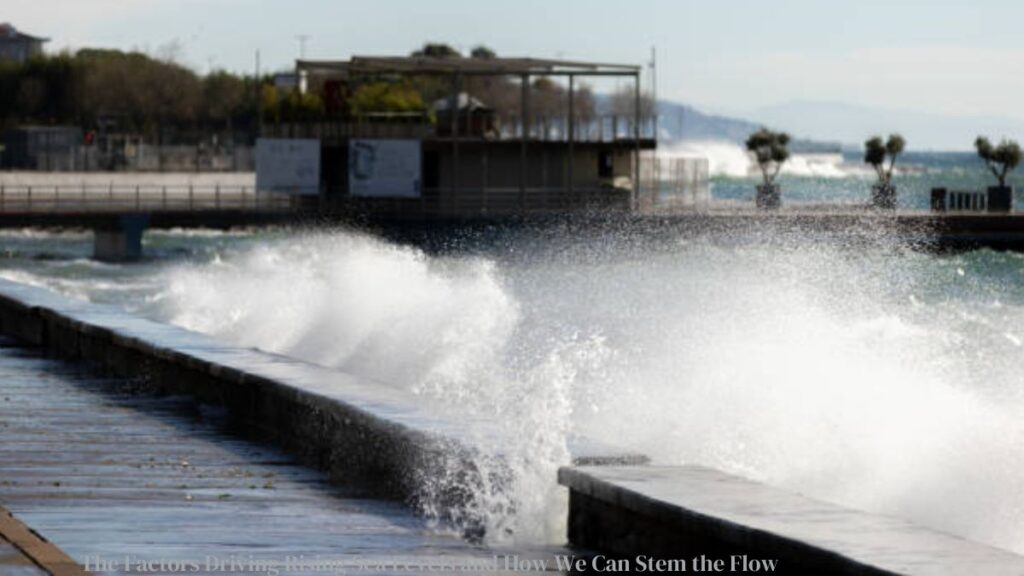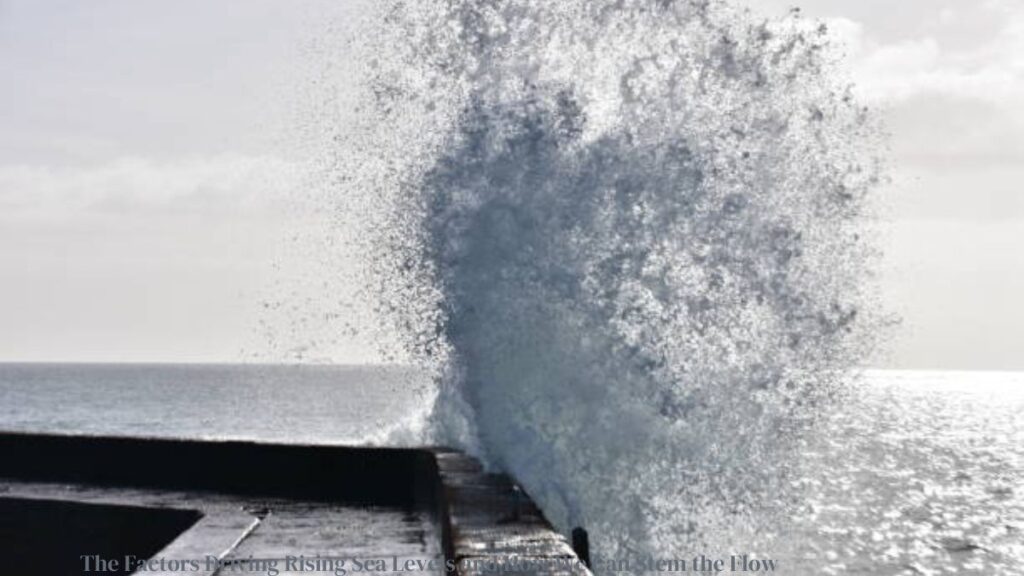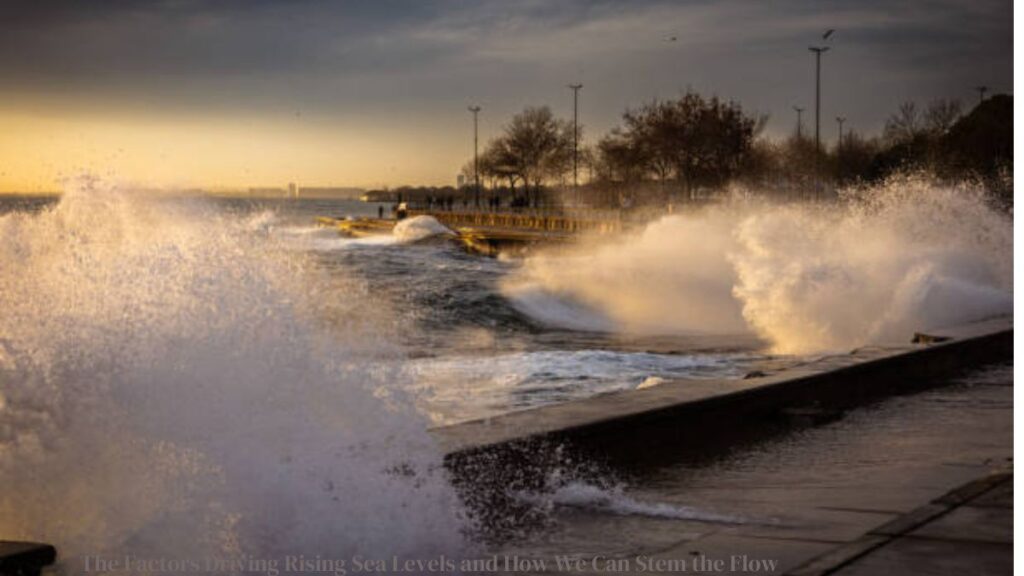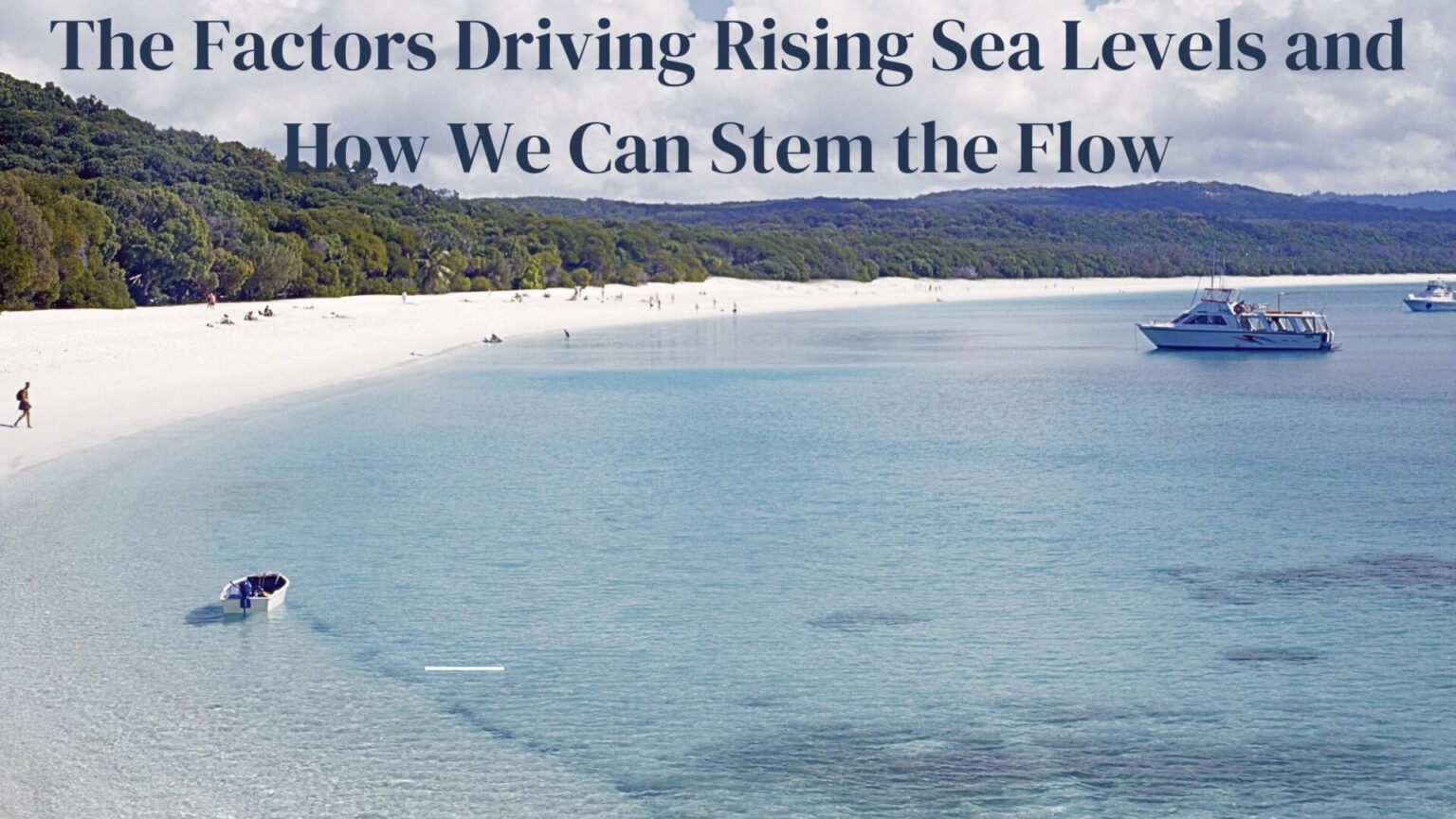Introduction:
Unstoppable Tide: The Factors Driving Rising Sea Levels and How We Can Stem the Flow

In recent decades, the phenomenon of rising sea levels has emerged as one of the most pressing challenges of our time. As temperatures soar and ice sheets melt, coastal communities around the world face an uncertain future, grappling with the relentless encroachment of the sea onto their shores. In this article, we delve into the factors fueling this unstoppable tide and explore potential solutions to mitigate its impact.
The Factors Driving Rising Sea Levels
- Climate Change: At the heart of the rising sea level crisis lies the specter of climate change. As greenhouse gas emissions continue to rise, the Earth’s atmosphere warms, leading to the thermal expansion of seawater. This expansion alone contributes significantly to the overall rise in sea levels.
- Melting Ice Sheets and Glaciers: The polar ice caps and glaciers serve as vast reservoirs of freshwater. However, as global temperatures increase, these ice masses are rapidly melting, pouring billions of gallons of water into the world’s oceans. The melting of ice sheets in Greenland and Antarctica, in particular, poses a significant threat to coastal regions worldwide.
- Land Ice Loss: In addition to glaciers and ice sheets, land-based ice, such as that found in mountain ranges like the Himalayas, is also contributing to rising sea levels. As this ice melts, it adds to the volume of water flowing into the oceans, exacerbating the problem.
- Ocean Currents and Circulation Patterns: Changes in ocean currents and circulation patterns can influence sea levels regionally. For example, variations in the Gulf Stream can cause sea levels to rise along the East Coast of the United States. Understanding these dynamics is crucial for predicting and mitigating the impact of rising sea levels on coastal communities.
Mitigating the Impact
While the prospect of rising sea levels may seem daunting, there are steps we can take to mitigate its impact and build resilience in vulnerable communities.
- Reducing Greenhouse Gas Emissions: Addressing the root cause of rising sea levels requires aggressive action to curb greenhouse gas emissions. Transitioning to renewable energy sources, improving energy efficiency, and implementing carbon pricing mechanisms are essential steps in this endeavor.
- Adaptation and Resilience Measures: Coastal communities must invest in adaptation and resilience measures to prepare for the inevitable impacts of rising sea levels. This may include building seawalls and levees, elevating infrastructure, and implementing nature-based solutions such as wetland restoration and beach nourishment.
- Conservation and Restoration of Coastal Ecosystems: Coastal ecosystems such as mangroves, salt marshes, and coral reefs play a crucial role in mitigating the impact of rising sea levels. Protecting and restoring these ecosystems can help buffer coastal communities from storm surges and erosion while sequestering carbon dioxide from the atmosphere.
- International Cooperation and Policy Action: Addressing the global challenge of rising sea levels requires coordinated action at the international level. Nations must work together to implement robust climate policies, enhance scientific research and monitoring efforts, and provide support to vulnerable communities facing the brunt of sea level rise.
How can coastal infrastructure be redesigned or adapted to withstand the effects of rising sea levels?
Coastal infrastructure can be redesigned or adapted to withstand the effects of rising sea levels through various strategies and approaches:

- Elevation and Reinforcement: Raising existing infrastructure such as roads, buildings, and seawalls can help protect them from inundation during storm surges and high tides. Reinforcing structures with stronger materials or adding additional support can also enhance their resilience to sea level rise.
- Natural Coastal Protection: Implementing nature-based solutions such as restoring coastal wetlands, mangroves, and dunes can provide natural buffers against erosion and storm damage. These ecosystems help absorb wave energy and reduce the impacts of flooding while also providing habitat for biodiversity.
- Flexible and Floating Infrastructure: Designing infrastructure that can adapt to changing water levels, such as floating buildings, bridges, and platforms, can be an effective strategy in areas prone to flooding. These flexible structures can rise and fall with the water level, minimizing damage during extreme events.
- Green Infrastructure: Incorporating green infrastructure features like permeable pavements, green roofs, and rain gardens can help manage stormwater runoff and reduce the strain on conventional drainage systems. This approach can mitigate flooding and erosion while also providing additional environmental benefits.
- Managed Retreat: In some cases, it may be necessary to strategically relocate or retreat from vulnerable coastal areas to safer locations. This can involve buying out properties in high-risk areas and restoring natural habitats to create protective buffers against future sea level rise.
- Integrated Planning and Design: Adopting integrated coastal management approaches that consider the interconnectedness of coastal systems and incorporate climate projections into planning and design processes is essential. This involves engaging stakeholders, including local communities, scientists, engineers, and policymakers, to develop resilient and adaptive solutions that meet the needs of both humans and the environment.
- Early Warning Systems and Emergency Preparedness: Implementing robust early warning systems and emergency preparedness measures can help minimize the impacts of coastal hazards associated with sea level rise. This includes developing evacuation plans, strengthening emergency response capabilities, and investing in monitoring and forecasting technologies.
By implementing a combination of these strategies, coastal communities can enhance their resilience to rising sea levels and minimize the risks associated with coastal hazards, ensuring the long-term sustainability and safety of coastal infrastructure and ecosystems.
What are some innovative technological solutions being developed to monitor and mitigate rising sea levels?
Several innovative technological solutions are being developed to monitor and mitigate rising sea levels. Some of these include:

- Satellite-Based Remote Sensing: Advanced satellite technologies, such as radar altimetry and interferometric synthetic aperture radar (InSAR), enable accurate measurements of sea level rise and the monitoring of changes in coastal land elevation. These satellite observations provide valuable data for understanding global and regional sea level trends.
- Coastal Monitoring Networks: Deploying networks of sensors, including tide gauges, pressure sensors, and acoustic Doppler current profilers, along coastlines helps monitor sea level changes, tidal variations, and coastal currents in real-time. These networks provide essential data for early warning systems and coastal management strategies.
- LiDAR and Bathymetric Surveys: Light Detection and Ranging (LiDAR) technology and bathymetric surveys allow for high-resolution mapping of coastal terrain, including elevation profiles and underwater topography. These surveys help identify vulnerable areas, assess coastal erosion, and support the design of coastal protection measures.
- Climate Modeling and Forecasting: Advanced climate models, coupled with data assimilation techniques, enable scientists to simulate future sea level rise scenarios based on different greenhouse gas emissions trajectories and climate change projections. These models provide valuable insights for long-term planning and decision-making.
- Artificial Intelligence and Machine Learning: AI and machine learning algorithms can analyze large datasets of satellite imagery, oceanographic measurements, and climate data to identify patterns, trends, and potential future scenarios related to sea level rise. These technologies help improve the accuracy of sea level predictions and support adaptive management strategies.
- Underwater Robotic Vehicles: Autonomous underwater vehicles (AUVs) and remotely operated vehicles (ROVs) equipped with sensors and cameras can explore underwater environments, including coastal zones and submarine features. These robotic platforms enable scientists to gather data on coastal ecosystems, submarine geology, and marine biodiversity, informing coastal management and conservation efforts.
- Climate-Resilient Infrastructure Design Tools: Innovative software tools and modeling platforms help engineers and planners design climate-resilient infrastructure, including seawalls, flood barriers, and stormwater management systems. These tools simulate extreme weather events, sea level rise, and coastal flooding scenarios to optimize infrastructure designs and enhance resilience.
By leveraging these technological solutions in combination with traditional monitoring methods and community engagement, stakeholders can better understand, adapt to, and mitigate the impacts of rising sea levels on coastal communities, ecosystems, and infrastructure.
Conclusion
The unstoppable tide of rising sea levels poses a grave threat to coastal communities and ecosystems worldwide. However, by understanding the factors driving this phenomenon and taking decisive action to mitigate its impact, we can work towards a more sustainable and resilient future. It is imperative that we act swiftly and decisively to stem the flow of rising seas and safeguard the well-being of current and future generations.






